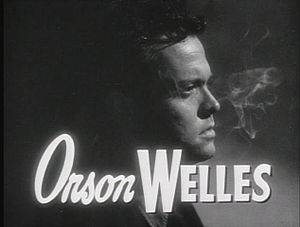I just finished reading
a great post on Gizmodo by Frank Beacham about Orson Welles's last project and his fascination with the then-new Sony Betacam. Welles took one look at the first professional camcorder and intuitively understood what its impact on video and
film production would be. Beacham's article brought to mind how many great filmmakers over the years were also technologists: Not only did they use the tools available, but they helped to design them (or actually designed them themselves.) The recent list includes:
- Francis Ford Coppola, who partnered with Sony for many years and was one of the first to apply video to motion picture production
- George Lucas, who developed one of the first computer-based non-linear editing systems, owned Pixar (and still owns ILM, Skywalker Sound and Lucas Digital) and pushed the limits of digital production, post-production, computer animation and special effects
- Garrett Brown, a cinematographer who invented the Steadicam and Skycam and changed the way that both motion pictures and sports television look
- James Cameron, who first pushed the envelope of computer graphics and special effects, and later, with his partner Vince Pace, created the Fusion 3D system that's helping to make 3D a core production and display technology
There's an old saying: "If you want a better tool, build it yourself." These artists and others like them built their own tools in order to create art that could never have been made before. More importantly, they share their knowledge with others in order to advance the "state of the art." If anyone ever asks the question "Are engineers creative?", the answer is everywhere. Creativity is essential to engineering; sometimes, it results in masterworks in software, consumer electronics or architecture, and sometimes, it results in brilliant motion pictures and videos.
If you want a better tool, build it yourself.

![Reblog this post [with Zemanta]](http://img.zemanta.com/reblog_e.png?x-id=e00208d7-50de-4ffa-84d5-66f6ce4a0741)
No comments:
Post a Comment